WONG SING BOW’S WHITE WIFE MINNIE (1877)
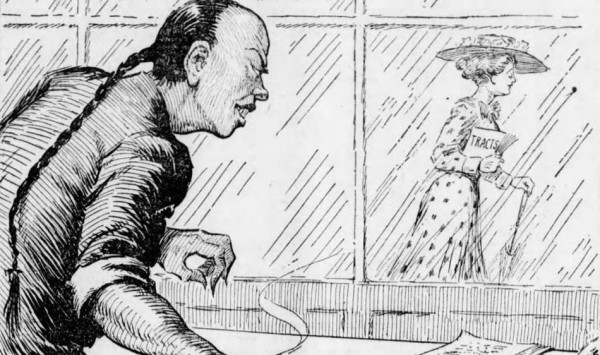
******************************************************************************************************************************** Brownstone Detectives investigates the history of our clients’ homes. The story you are about to read was composed from research conducted in the course of one of those investigations. Do you know the history of YOUR house? ******************************************************************************************************************************** In 1886, the life that Wong Sing Bow had been building up for years began to crumble before his eyes. A naturalized U.S. citizen, Wong Sing had been born “a subject of the emperor of China.” But he had been in America “long enough to save considerable money and to appreciate the beauty of Irish girls,” said one paper of the time. Wong Sing spoke English fluently and was often called upon by the authorities to interpret. With all that Wong Sing had going for him, it had originally seemed likely that he was going to have a good life. But this was the 1800s. And Wong Sing was Chinese. ANTI-CHINESE PREJUDICE IN 19TH CENTURY BROOKLYN After Wong Sing’s arrival in the U.S. around 1870, according to one paper, “the celestial youth immediately fitted himself in the groove of circumstances. “He decided to become intensely American. He shaved his cue off, doffed his Chinese garb, proclaimed his intention to become a citizen, and went to Sunday school ‘all samme like Melican man.’” Apparently, the papers, like most Americans, had no politically correct bent in those days. But the Chinese were located squarely at the bottom of the social construct – just slightly beneath the Irish and the Germans – and so […]
THE FUR-MAN OF FULTON STREET (1896)
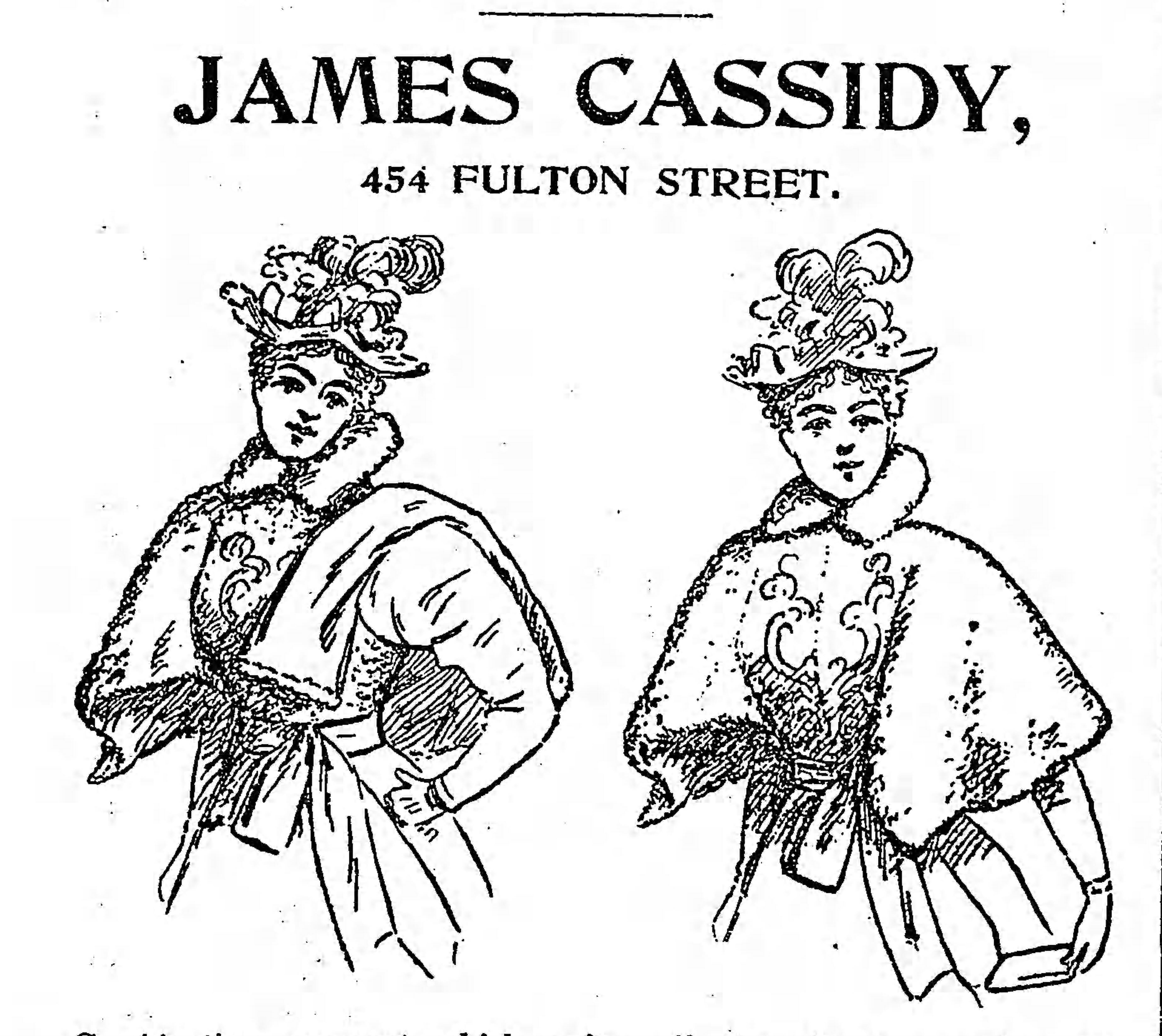
Fur was a big thing 100 years ago. The highest classes of women wore furs and those not as high a class wished to emulate them. There were all types of furs – from lynx, to fox, to otter and seal – even mole, squirrel and Persian sheep! James Cassidy not only sold the finest furs in the latest styles, but he also altered them as the styles changed, repaired them when they became damaged, and then refrigerated them in the summer when they were not in use. After a fur was selected, altered, and sold, it also needed to be cared for. So an entire industry sprang up around their cold storage in the warmer months. Cassidy used the latest in refrigeration techniques – an ammonia refrigerating machine – a freezing method which “far surpasses the old.” With refrigeration at hand within the same building where the furs were sold, an employee of Cassidy’s would simply send a wagon around to their client’s door and pick up their furs, bringing them back to Cassidy to summer in his cold storage. CASSIDY MOVES DOWN FULTON Cassidy’s fur emporium at 454 Fulton Street, a new “four-story brick building” in 1889, allowed him to expand his operations as he moved from his former shop at 277 Fulton Street. He held his grand opening later that year on October 29th. By 1900, Cassidy’s son, James, Jr., was running the business. In 1902, Although Cassidy continued to operate his store from this location, he […]
A BED-STUY BUILDER “GOES ASTRAY” (1891)
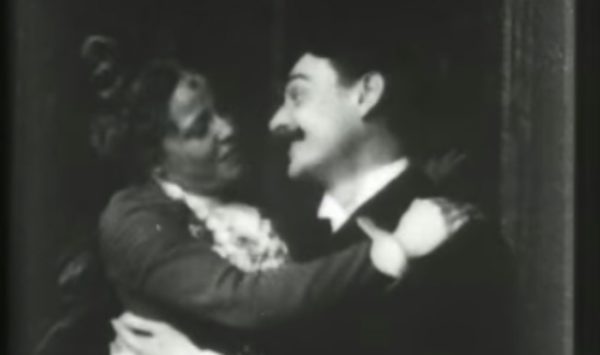
******************************************************************************************************************************** Brownstone Detectives investigates the history of our clients’ homes. The story you are about to read was composed from research conducted in the course of one of those investigations. Do you know the history of YOUR house? ******************************************************************************************************************************** One of the more colorful builders in the Bedford-Stuyvesant area before the turn of the century was Ransom F. Clayton. Clayton and his wife Hannah purchased entire blocks for development and became rich reselling land and building brownstones for occupancy. Clayton, approximately 60 years of age in the early 1890s, was the founder of the building firm Ransom F. Clayton & Son. In addition to being a builder, he had also been a jack-of-all-trades – a Civil War veteran, an inventor, a nominee for City Controller with the Prohibition Party, and a director and the treasurer of the Ocean Palace Elevated Railroad. In 1891, though, he could add to that list the title of “scoundrel.” For, in that year, having some years previous turned over the reins of his building firm to his son, Clayton was now being given the opportunity to lose the property in a highly publicized divorce scandal. Several newspapers of the time hyperventilated over the steamy details of the case, from the “plain black gown” that Mrs. Clayton wore to court, to the description of “the other woman,” Mrs. Margaret F. Oakley, who was “tall,” “finely formed,” and “richly attired,” and further to, finally, how the crowd in the packed court room erupted in applause when the […]
COULD COLORED MEN PUT OUT FIRES? (1898)
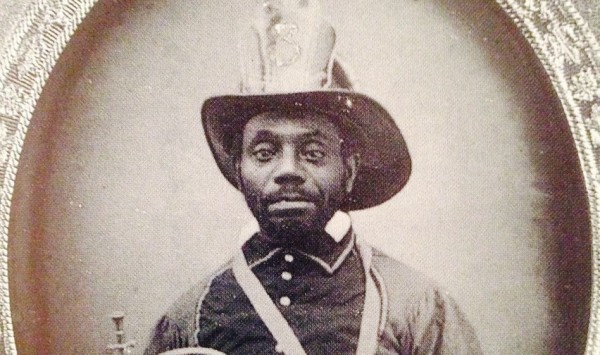
******************************************************************************************************************************** Brownstone Detectives investigates the history of our clients’ homes. The story you are about to read was composed from research conducted in the course of one of those investigations. Do you know the history of YOUR house? ******************************************************************************************************************************** In 1898, a Brooklyn – and New York City – “first” occurred when Fire Commissioner John Jay Scannell assigned the first black man to serve in the Fire Department in Brooklyn. William H. Nicholson, of No. 200 Myrtle Avenue, was a 29-year-old former cement tester who had been born in Virginia. He would become, in a number of ways, the precursor to the many first blacks to be “allowed” to integrate society’s historically “white” institutions in the century to follow. While, in 1891, Wiley G. Overton, another “colored man,” had been the first to be appointed as a patrolman on the Brooklyn police force, Nicholson, as a fireman, was still entering into a conflagration of his own. Patrolman Overton had found his existence on the force to be terminally difficult. Assigned to patrol the Brooklyn “colored district,” he had been transferred around to several precincts because no white officer would sleep in the same dormitory with him. His very presence in every station house had “caused trouble.” Finally, after being subjected to all sorts of “annoyances,” Overton had been “practically hounded from the force” a few years after his appointment. And it was likely that Nicholson knew this. Now, Nicholson had become the Fire Department’s unofficial test case for “colored integration.” […]
BUTCHER, BAKER, UNDERTAKER (1895)
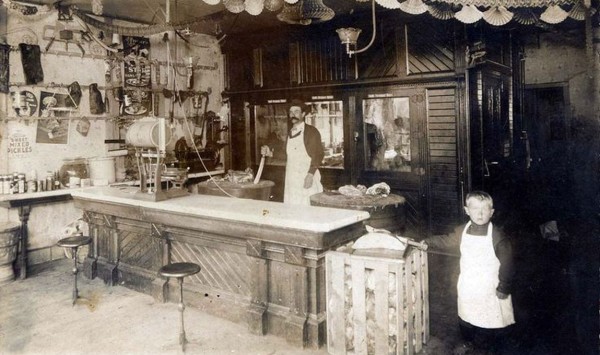
******************************************************************************************************************************** Brownstone Detectives investigates the history of our clients’ homes. The story you are about to read was composed from research conducted in the course of one of those investigations. Do you know the history of YOUR house? ********************************************************************************************************************************As the sleeping giant that is Bedford-Stuyvesant’s Ralph Avenue begins to awaken from its slumber, it is tempting to take a look back at some of the businesses that once lined this bustling thoroughfare. STUYVESANT EAST OF YORE The eastern section of Stuyvesant was alive with industry in the late part of the 19th and the early part of the 20th centuries. As houses had recently been built along the main streets, stores, schools, and churches had gone up along the avenues and on corners, dotting the landscape with their offerings. The neighborhood, after its initial build-up in the 1890s, became completely self-sufficient in terms of goods and services. Residents of Macon Street, like those from the other streets in the neighborhood, found themselves surrounded by a variety of offerings that would allow them – and their servants, in some cases – to satisfy the needs of their families easily and quickly. THE BUSTLING BUSINESS CORRIDOR THAT WAS RALPH AVENUE Starting in the late 19th century, Ralph Avenue became a busy local business corridor filled with a wide variety of shops and stores that suburban families needed to support households of consumers. Since its inception, the avenue had public transportation, in the way of horse-drawn omnibuses and then later a streetcar line, […]
THE FILTHY STREETS OF STUY HEIGHTS (1891)
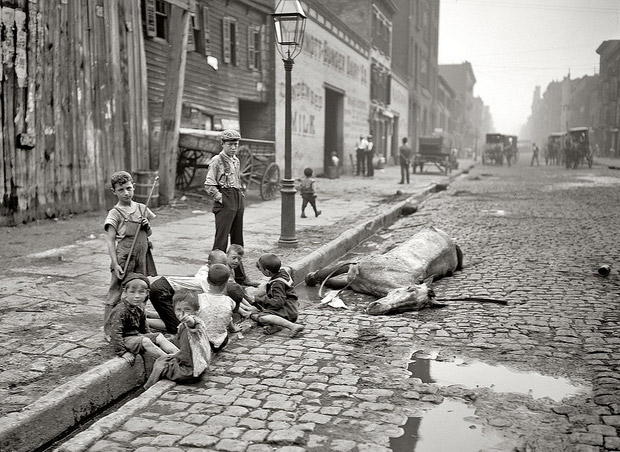
******************************************************************************************************************************** Brownstone Detectives investigates the history of our clients’ homes. The story you are about to read was composed from research conducted in the course of one of those investigations. Do you know the history of YOUR house? ******************************************************************************************************************************** “I have lived in Macon Street since Nov. 28, and there has not been a soul to clean that street during that time.” It happened then as it does now – people complain about the condition of their streets and their neighborhood, in general. The above quote was from 1891, back when Stuyvesant Heights was in the throes of a major construction expansion. Apparently, there were construction materials everywhere – filling the streets and clogging the sewers. “There are at least a thousand tons of sand and stone in the street with grass growing all over it,” the same commenter noted. “The sewer is filled up with sand.” It got so bad for this section of town – due to the relatively unregulated construction industry – that every time there was a heavy rain storm, the article continued, residents’ cellars were “flooded with one or two feet of water.” Ironically, our current 21st century Mayor’s Office declared a few years ago that the streets of Bedford-Stuyvesant were among the dirtiest in the city. Specifically, the office noted that the cleanliness of 15% of our streets was “unacceptable.” Now that Bed-Stuy is a built-up section of our city, maybe we don’t have much of an excuse for the filth. But it must […]
THE GENTRIFICATION OF SARATOGA PARK (1896)
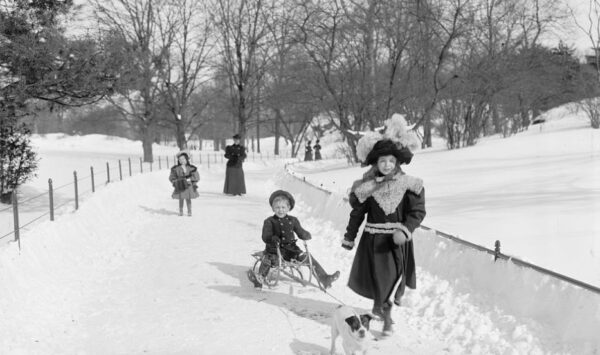
******************************************************************************************************************************** Brownstone Detectives investigates the history of our clients’ homes. The story you are about to read was composed from research conducted in the course of one of those investigations. Do you know the history of YOUR house? ******************************************************************************************************************************** Around the mid-1890s, the public in the Eastern District of Brooklyn – in what would come to be known as the Stuyvesant Heights section of Bedford-Stuyvesant – began clamoring for a space for a local park. There were three things driving this support: 1) the extension of the Brooklyn street grid system, along with 2) failing attempts by local governments in keeping pace with the growing population in the 25th Ward, and partly due to 3) the success and popularity of Central Park in Manhattan and Prospect Park in Brooklyn. As a result, the City’s aldermen, sensing the growing aspiration for “breathing space” in the locality, went looking around for an adequate stretch of land to acquire for a park – something that would suit the local residents. After a thorough exploration within the ward, the City’s elders settled upon a square little more than 3 acres in size, bounded by Halsey and Macon streets, and Howard and Saratoga avenues. Other than the fact that it was in a very desirable location, it was really the only choice they had – it was the single available piece of undeveloped land in the district of its size. O! And then there was the price… JAMES CLINTON BROWER ENTERS THE SCENE This singular […]
THE BROWNSTONE DETECTIVES ON HGTV!
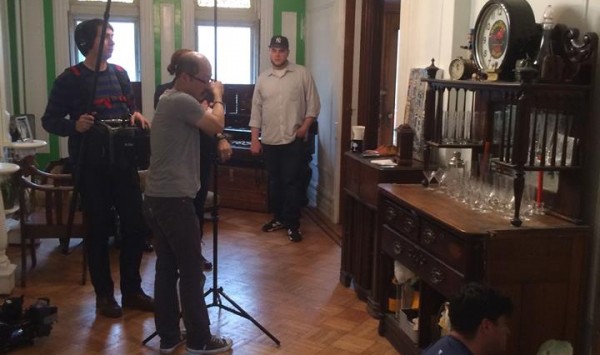
Just when you thought you couldn’t get enough of The Brownstone Detectives…. Those loveable history gumshoes are taking it to HGTV!!! The Brownstone Detectives will sleuth it up this summer in a series focusing on the extraordinary findings people have made within their old houses. They will focus first on a 19th century family’s unlucky chapter spent in their brownstone home in Stuyvesant Heights. Stay tuned for more news…as this case develops! Follow @BrownstoneDetec ———————————————————————————————————————– The Brownstone Detectives This story was composed from research performed by The Brownstone Detectives. Let us do an in-depth investigation of your house and its former owners and produce your very own House History Book. Your hardbound coffee table book will include an illustrated and colorful narrative timeline that will bring the history of your house to life. Contact us today.
WHOSE MUG SHOT IS THIS!?!?!?!?
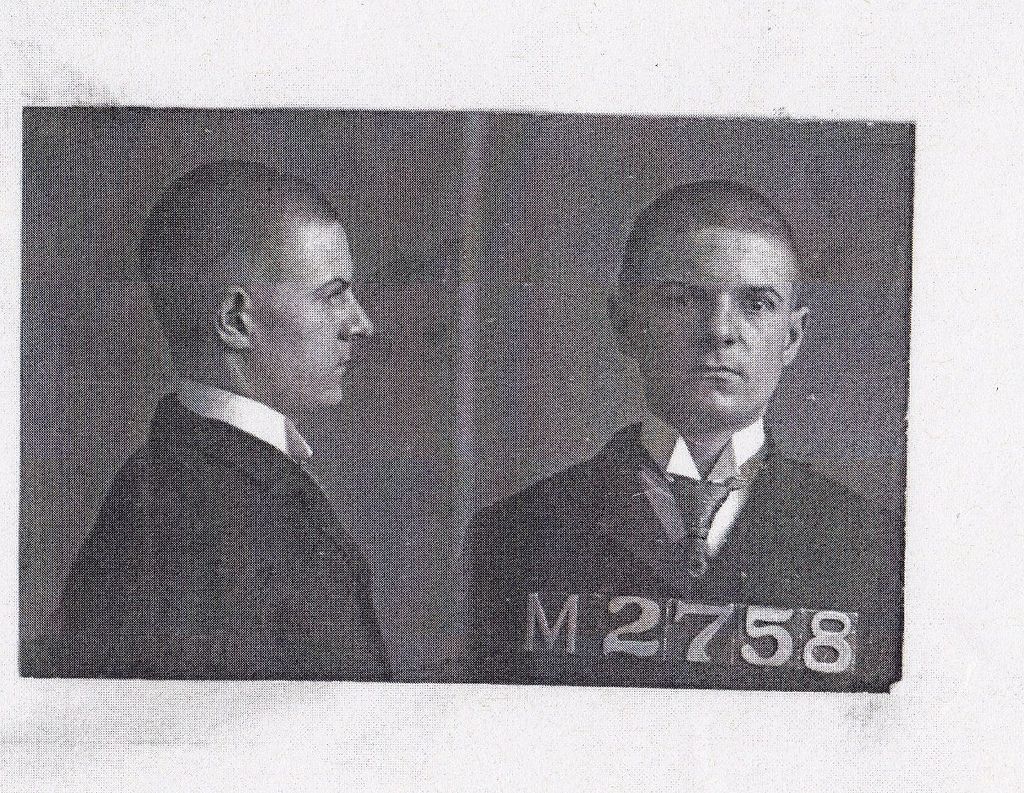
OK, Junior Brownstone Detectives! Let’s get those sleuthing caps on! Because today we are asking you to help solve A MYSTERY WITHIN A MYSTERY! Here is what we want you to do: 1. Take a look at the mug shot above, then 2. Skim through our past Brownstone Detectives Blog posts, and 3. Find the person you think is pictured above, and let us know at our Facebook post! (Only one guess allowed per person….) It’s that simple. All winners become instantaneous Junior Brownstone Detectives, able to assist on any and all House History mysteries! We will publish the answer next week when our first Guest Brownstone Detective will contribute a “part two” story for one of the posts in our Brownstone Detectives Blog. Now, get going and find that subject! Follow @BrownstoneDetec ———————————————————————————————————————– The Brownstone Detectives This story was composed from research performed by The Brownstone Detectives. Let us do an in-depth investigation of your house and its former owners and produce your very own House History Book. Your hardbound coffee table book will include an illustrated and colorful narrative timeline that will bring the history of your house to life. Contact us today.
Brownstone Detectives on TV
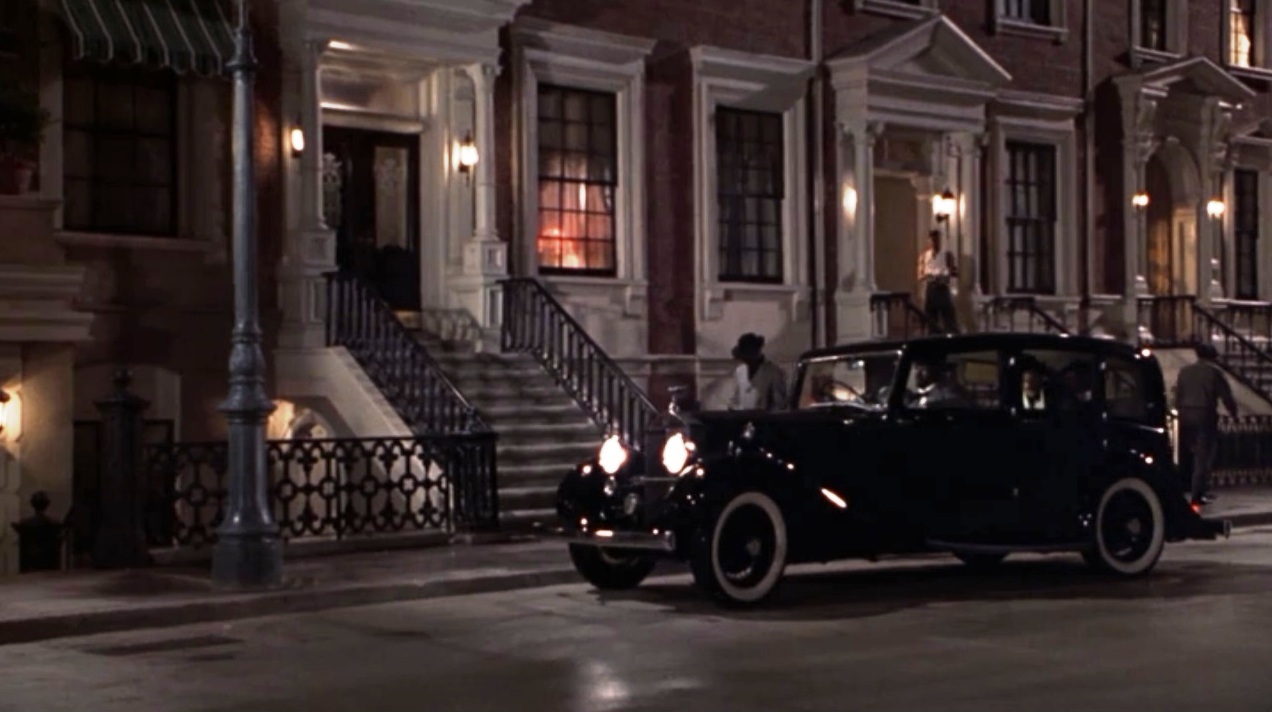
OK, all you house history fans! A certain TV network will be at Brownstone Detective H.Q. in May to begin filming an episode of a television series. The show will focus on the first family that lived in the house, The Corletts, and the “unfortunate occurrences” that seemed to emanate from the house in its early days. BAD LUCK? YOU DECIDE… It all started when the initial architect/builders of 738 Macon Street purchased the lot for the house and began building. About halfway through its construction, though, the house would go into foreclosure. About a year later, the man who would eventually finish building the house, Wilfred Burr, A.K.A. “Lucky 13,” would buy the foreclosure property in a tax sale. After the sale was completed, Burr had saved enough money in the purchase that he was able to add an additional floor to the home, increasing its number of rooms from 9 – to 13. Finally, after Burr completed the house, it would become the 13th house on the block. But the the odd luck didn’t end there. When the Corletts moved into 738 Macon Street, all seemed to be smooth sailing until the family matriarch, Margaret, passed away. Like dominoes, every year thereafter, until 1900, a Corlett would die – Margaret’s son, John; her son-in-law, Robert; and her daughter, Eleanor. At this point, Margaret’s remaining child, Robert, decided presumably to get his family away from the house. He sold the property to a flipper and moved the family to […]